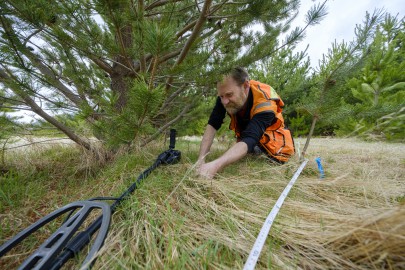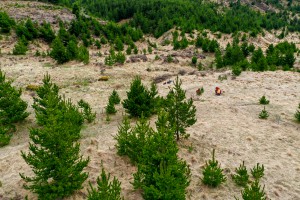
Research technician Rowan Buxton from Manaaki Whenua locates seedlings of wilding pines to remeasure at the Molesworth Station near Hanmer.
However, up until 4 years ago we still had key gaps in our knowledge of how wilding pines spread, how they affect ecosystems, and how to better control them. In 2017 the MBIE Endeavour-funded programme ‘Winning Against Wildings’ started to address these key knowledge gaps and help achieve large-scale gains in the control of wildings.
Our research in the ‘Winning Against Wildings’ programme aims to resolve where, and when, management can minimise the spread and negative impacts of wildings, while minimising costs and adverse environmental effects. We combine research on invasion dynamics and management interventions to ensure that management efforts slow or reverse wilding pine invasion.
The programme brings together collaborators from Manaaki Whenua, Scion, the University of Canterbury, Lincoln University, and overseas. We also work closely with on-the-ground operations and across government to stop the accelerating impacts of wildings across New Zealand. Our collective goal is to see the National Wilding Conifer Management Strategy succeed: wildings have been controlled or are contained nationally by 2030.
We are now over 3 years into the research programme and have made much progress to help manage wildings. We have:
- designed, built and deployed a new, low-cost apparatus that enables rapid measurement of seed dispersal potential, to improve estimates of wilding spread risk
- completed trials to improve wilding control methods, such as lower-dose herbicides for aerial spraying, and new precision methods to control scattered wildings using aerial drones – many of these improvements in wilding control tools are now in good-practice guides and are widely used by land managers to help make control effective, cheaper and safer
- developed new simulation models to predict wind movement and behaviour in complex terrain, which will improve our understanding of how topography and plantation design influence wilding spread risk to prevent future wilding invasions from planted sources.
Next we will put these findings into practice. Our close links with the National Wilding Conifer Control Programme and the NZ Wilding Conifer Group ensure we will make more progress in tackling the national wilding pine problem together.


